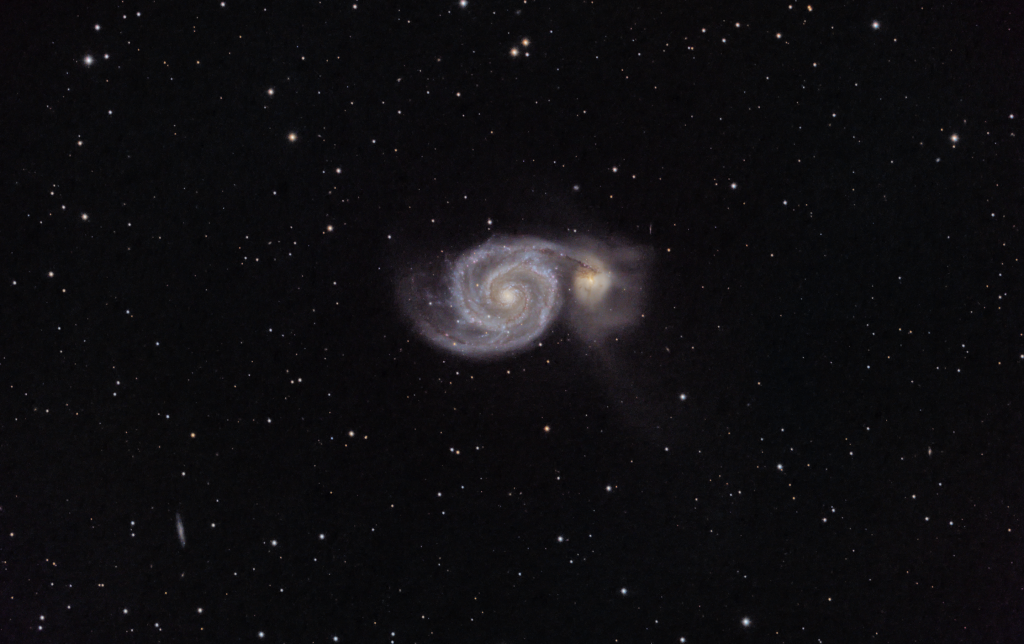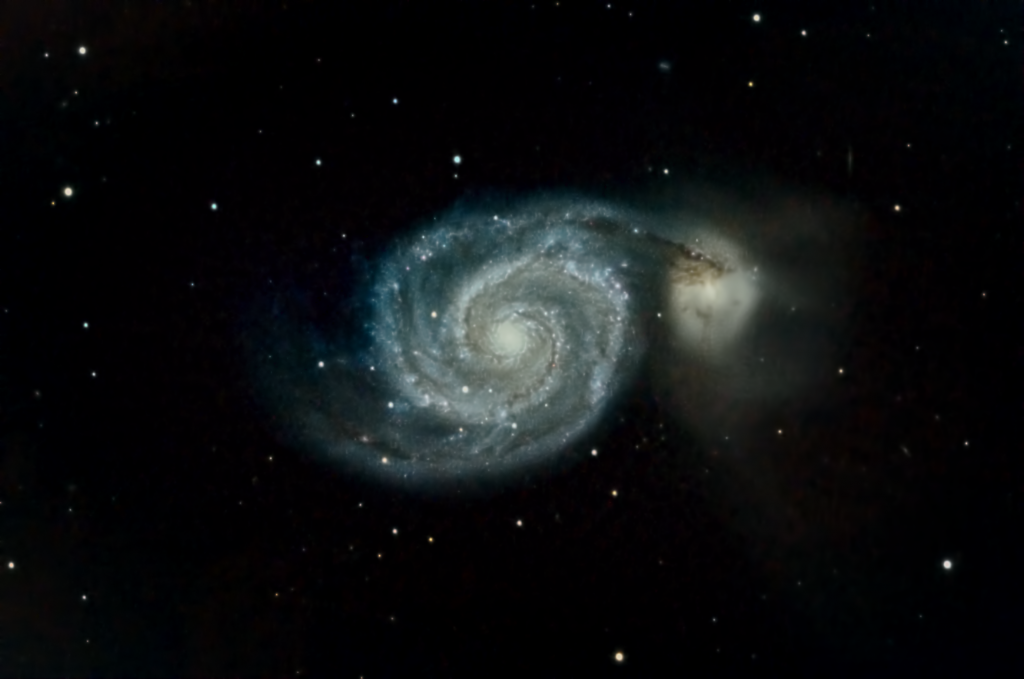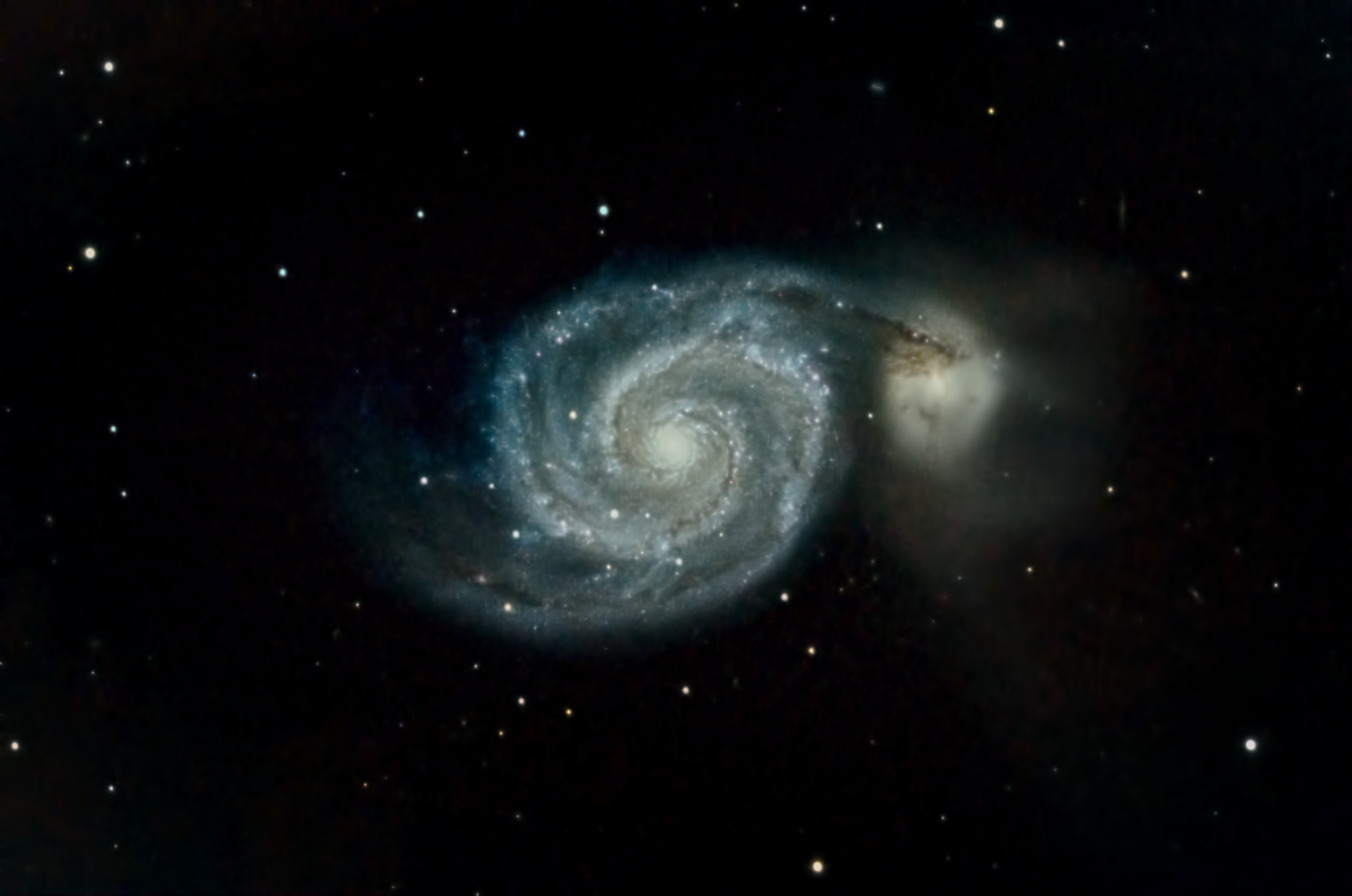
Similar Posts
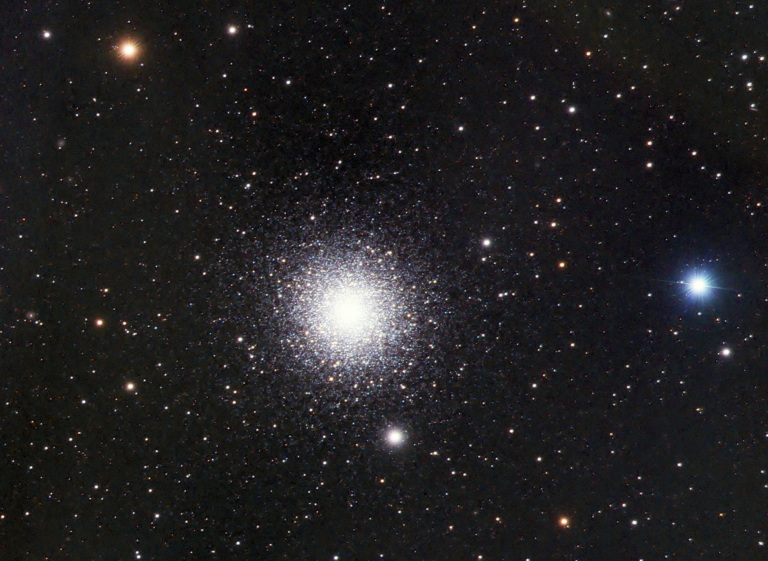
Globular Cluster M15
Located about 33,600 light-years away within the constellation Pegasus, Messier 15 is a globular cluster – a tight, ancient ball of stars on the outskirts of our galaxy. The Milky Way is surrounded by many such clusters; this one’s special because it’s known to host a rare intermediate-sized black hole at its center, and it…
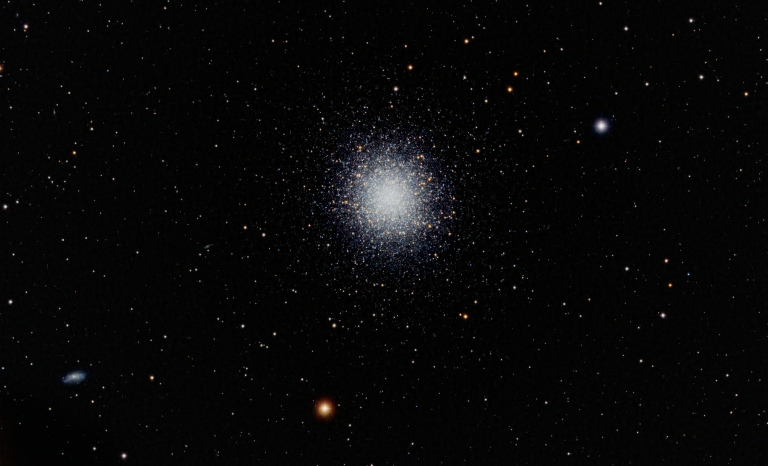
Globular Cluster M13
M13, the great globular cluster in Hercules. You can see some of its interesting neighbors, including the galaxy NGC 6207 in the lower-left. While M13 itself is 25,000 light-years away just above our galactic plane, NGC 6207 is 37 million light-years distant. About halfway between the two, the galaxy IC 4617 is also visible –…
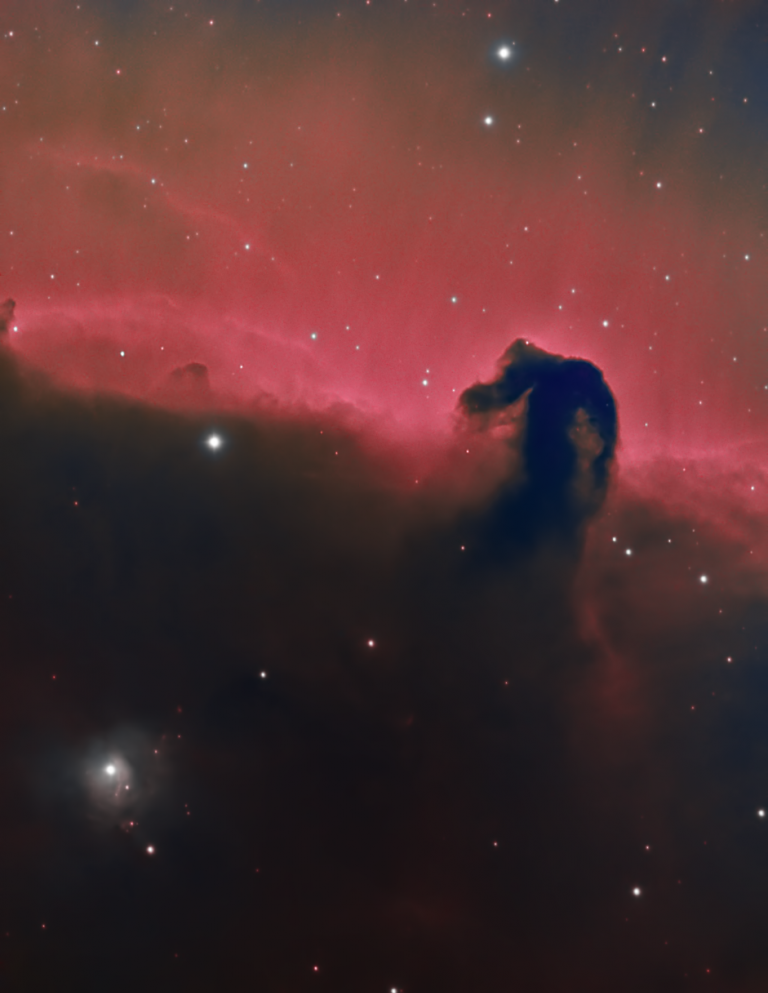
Horsehead Nebula
The iconic Horsehead Nebula, near Orion’s belt. Shot in narrowband over two evenings.
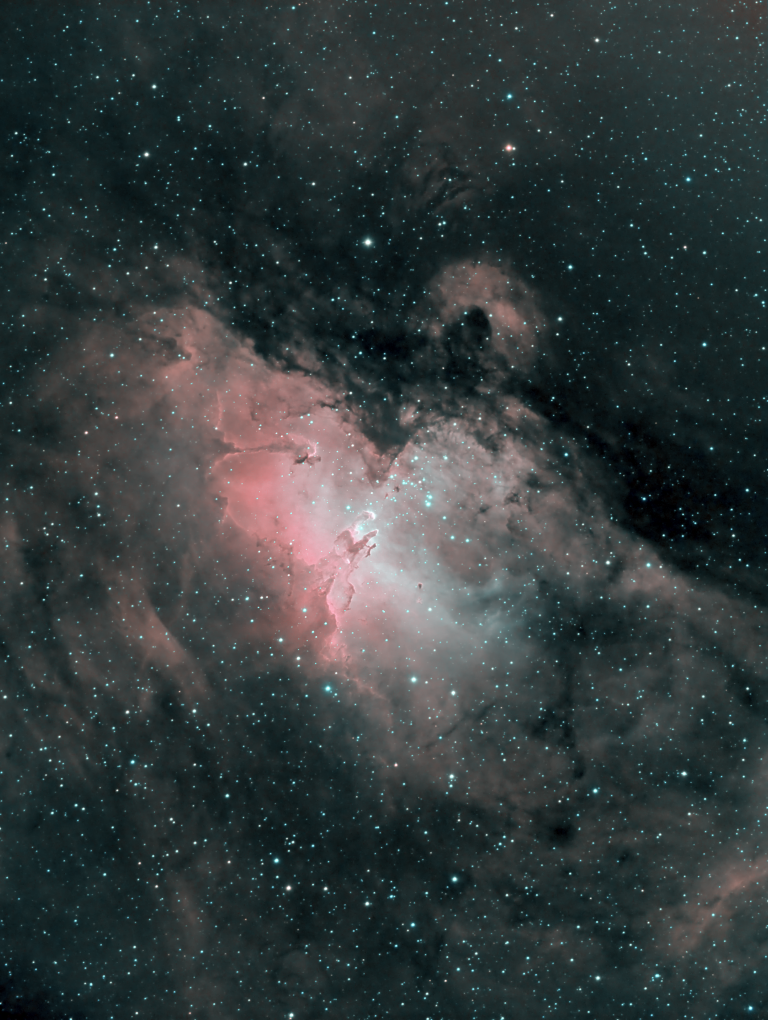
The Eagle Nebula
A wider shot of the Eagle Nebula, with the famous “pillars of creation” in its center.
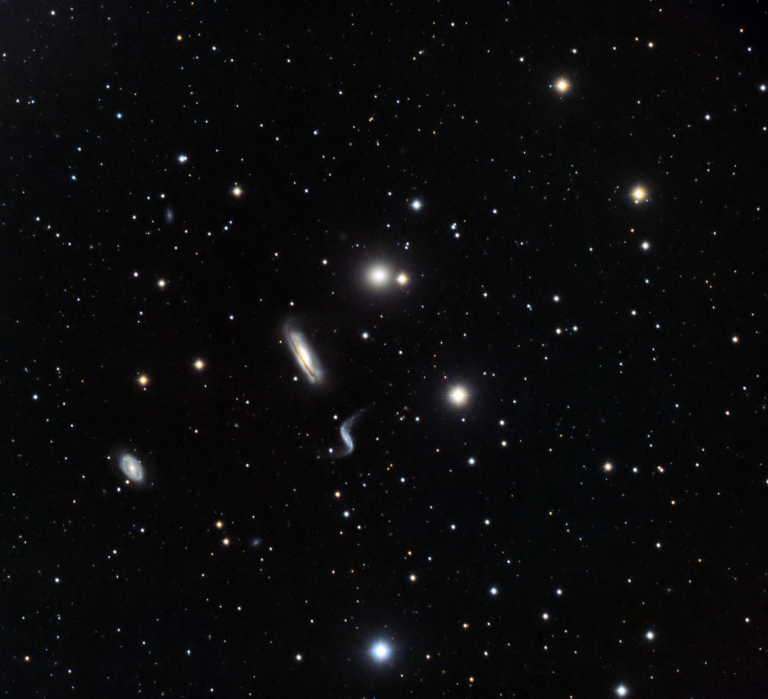
The Hickson 44 Galaxy Group
This is a weird little cluster of galaxies – there are four in all, and each one is completely different. There’s a weird, S-shaped one that must have been messed up by its neighbors in the past, a somewhat normal-looking spiral galaxy, and elliptical, and another one that’s viewed edge-on. Galaxies that have interacted with…
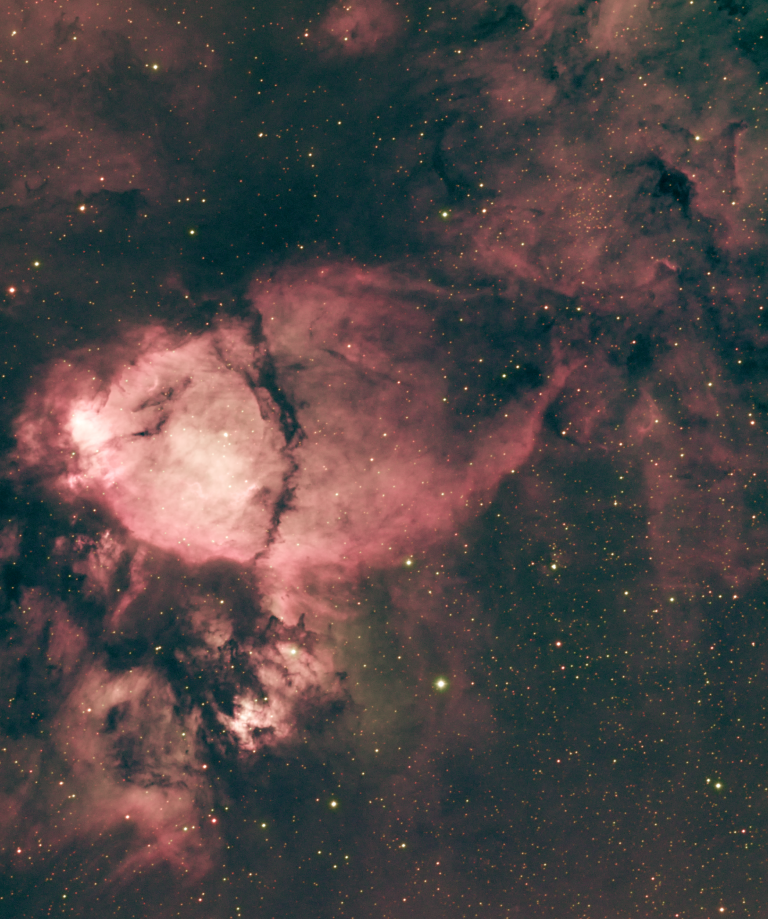
The “Fish-Head Nebula”
It’s really just a small portion of the Heart Nebula… that kinda looks like a fish. Maybe not the prettiest object in the cosmos, but it reflects a few technical accomplishments for me. About 20 hours of exposure time in total on this. Below I’m presenting it in a false-color “Hubble Palette”, as well as…

